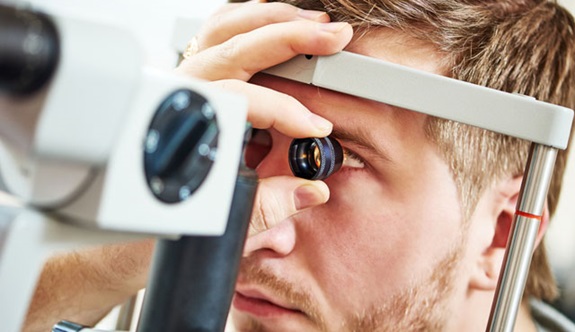Cataract and glaucoma are “sibling diseases” and the incidence of both diseases increases after the age of sixties. The incidence of cataract in glaucoma patients is higher than in normal people. In some types of glaucoma (eg, exfoliative glaucoma, myopia, narrow-angle glaucoma), cataract formation is more common and cataract development may accelerate after glaucoma surgeries.
Cataract development can impair glaucoma control and make it difficult to follow
The aim in the treatment of glaucoma is to reduce the intraocular pressure to levels that do not pose a danger to the optic nerve (target intraocular pressure) and to control it. However, considering that glaucoma continues throughout life and becomes more difficult to control with advancing age, it may be necessary to take additional measures such as medication, laser or surgery over time.
In glaucoma follow-up, besides the measurement of intraocular pressure, it is necessary to monitor the changes in the optic nerve with special diagnostic methods that analyze the computerized visual field or optic nerve head. In the presence of cataracts, it may be difficult to perform these tests correctly and to follow the disease.
Again, maturing cataract can narrow the duct system through which the fluid in the eye leaves the eye, making it difficult for this fluid to leave the eye and disrupting the control of intraocular pressure.
Cataract surgery should not be waited long in patients with glaucoma
Performing cataract surgery earlier in patients with glaucoma provides some benefits. First of all, in all types of glaucoma, there is a certain decrease in the intraocular pressure value after cataract surgery. Accordingly, postoperative glaucoma drugs can be reduced or, if a single drug is used, it can be stopped completely.
If the glaucoma type is “narrow-angle” or “closed-angle glaucoma”, the intraocular pressure drop is higher than the “open-angle glaucoma” types. For this reason, cataract surgery to be performed in cases of “narrow or closed-angle glaucoma” can be recommended in the early period, as it positively affects glaucoma treatment as well as visual improvement.
Cataract surgery may be more difficult in eyes with glaucoma
Today, the current method applied for cataract surgeries is “phacoemulsification”, and the lens material is aspirated using “ultrasonic” energy through an incision of approximately 2 mm, and the artificial intraocular lens is folded into the cleaned pouch.
In glaucoma patients, it may be necessary to use special assistive tools and techniques during cataract surgery as the pupil (pupil) grows more difficult. Also, in exfoliative glaucoma, the ligaments holding the lens in place may be weak. This may cause the artificial intraocular lens placed in the eye to dislodge or shift. In this case, special precautions must be taken.
When should we do glaucoma, when cataract, when combined surgery?
On the other hand, if the cataract is advanced, but the glaucoma is under control with a small number of drugs, only cataract surgery can be performed and glaucoma medications can be continued after the surgery.
If glaucoma cannot be controlled with drugs, if there is advanced glaucomatous damage and if the cataract is not very intense, glaucoma surgery should be performed first.
If the cataract is intense and glaucoma cannot be controlled with drugs, cataract and glaucoma surgery can be performed in the same session.
This preference is determined by the physician, illuminating information is given to the patient, and the surgery is performed with the consent of the patient.





